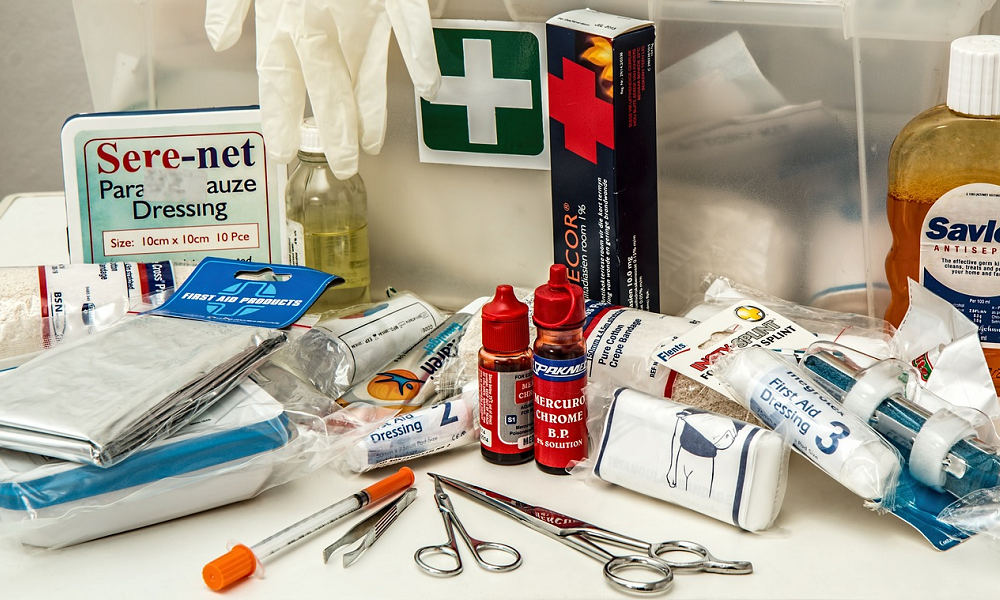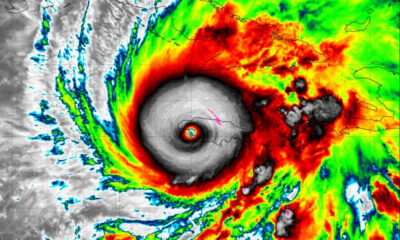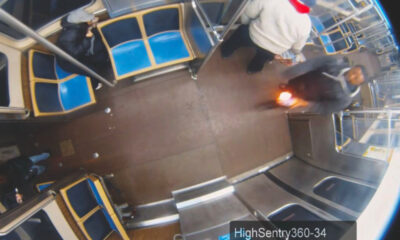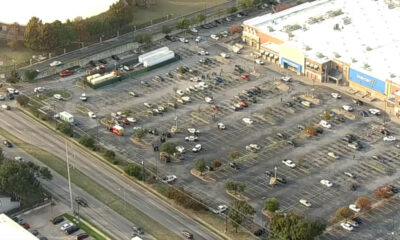Reviews
CPR and First Aid Classes for Retail and Hospitality Staff

Working in a busy store, restaurant, or hotel means interacting with people from all walks of life every day. In such lively environments, being prepared for the unexpected is a valuable skill. That’s why CPR (Cardiopulmonary resuscitation) and first aid skills are so important in retail and hospitality. These workplaces welcome hundreds of people every day, which means accidents and health issues can happen at any time.
When employees learn first aid and CPR, they’re not only responding to emergencies – they’re helping make workplaces safer. Read this blog to learn why CPR and first aid classes are essential to business-to-people operations.
What Are the Most Common Emergencies in Retail and Hospitality Settings?
There are risks involved for every business. American employers in 2023 recorded 2.6 million private-sector nonfatal occupational injuries and illnesses in private industries, which dropped by about 8.4% from levels in 2022. Retail and hospitality emergencies are unforeseen, and staff need to respond quickly. The most common emergencies include:
- Choking
A customer might choke on food at a restaurant, but in a store, children might ingest foreign objects. Staff who receive first aid training learn the Heimlich maneuver and other ways of dislodging the airway obstruction quickly.
- Fainting or Collapse
It can result in fainting of customers or employees caused by dehydration, tiredness, or illness. First aid training educates workers about how to reposition the person in safety, check for breathing, and call for help.
- Cardiac Arrest
Cardiac arrest can occur to anyone at any time, and most often without warning. Being trained in CPR and being able to use an AED(Automatic external defibrillator) allows workers to keep someone alive until the emergency services can arrive. Rapid response greatly improves survival rates, so this is some of the most critical training in any office setting.
- Slips, Trips, and Falls
Wet floors, crowded aisles, or uneven surfaces can cause slips, trips, and falls. Both employees and customers are at risk. First aid training prepares staff to handle sprains, bruises, or even broken bones.
- Allergic Reactions
Food allergies in restaurants or reactions to products in retail stores can be severe. Trained staff know how to recognize early signs such as swelling or breathing trouble. They can provide first aid, call emergency services, and assist with an epinephrine injector if available.
- Heat or Stress-Related Issues
Busy workplaces can cause overheating, dehydration, or stress, leading to fainting, dizziness, or confusion. First aid training teaches staff to recognize these signs early, move the person to a safe place, and offer water or rest.
How Long Does Training Take & What to Expect
Many managers worry that training will take too long or disrupt work. The good news is CPR and first aid classes are designed to be practical and flexible.
- Length of Training
Most CPR and first aid classes take about 4 to 6 hours for basic certification. Some advanced classes may last a full day. Training is practical, simple, and easy to complete without causing major disruptions to business operations.
- Hands-On Practice
Training is not just lectures. Employees get to practice actual skills like chest compressions on lifelike mannequins, how to bandage injuries, and how to react in emergency situations. Hands-on training instills confidence, so workers understand without a doubt what to do if a real emergency occurs on the job.
- Certification
At the completion of training, staff receive valid official certificates good for close to two years. Certification proves staff are capable of responding to medical emergencies, instilling confidence among customers and staff in workplace safety.
- Renewal
Skills will deteriorate over time, so refresher courses are provided. Renewal training is less than the original course and keeps staff feeling competent and current. Going over key steps keeps employees fresh and able to respond quickly when emergencies happen.
What are the Main Advantages of Business CPR and First Aid Training?
Business is not just about great customer relations, it’s also about making sure one keeps people protected. CPR and first aid classes provide businesses with guidelines for them to make sure they’re treating their employees well and addressing unexpected crises capably. The advantages of CPR and first aid courses are:
- Safer Workplace
When staff are provided with CPR and first-aid knowledge, they will respond promptly in cases of emergency. This enhances employees’, customers’, and visitors’ safety levels in the workplace. Through this, companies will develop a safe environment where people feel comfortable working, shopping, or dining every day.
- Customer Trust
Customers feel better if employees are equipped for emergencies. If it’s the guest at one’s hotel, the patron at one’s restaurant, or the shopper at one’s store, individuals will feel better if they know that help is not out of reach. Confidence is thus instilled, loyalty is fostered, and customer safety matters.
- Legal Protection
Companies that train employees in CPR and first aid are less vulnerable to litigation risks. If someone is injured, having something to document adequate training in place demonstrates responsibility and care. This reduces litigation opportunities and demonstrates corporate concern about safety and employee well-being.
- Lower Expenses
Rapid response to injuries or medical emergencies saves money. Companies also prevent possible lawsuits and downtime, so CPR training and First Aid Training is a money-smart investment in long-term safety and coverage.
- Competitive Advantage
Not every firm undertakes preparing employees for emergencies. Organizations that distinguish themselves from others as safe, trustworthy, and customer-friendly. This competitive advantage helps attract customers and retain employees.
What Should Be in Your First Aid Kit?
Training goes hand in hand with being prepared. Every retail store, restaurant, and hotel should have a stocked first aid kit. It should include:
- Adhesive bandages (various sizes)
- Sterile gauze pads and adhesive tape
- Antiseptic wipes and hand sanitizer
- Scissors and tweezers
- Instant cold packs
- Elastic bandages (for sprains)
- Disposable gloves
- Burn ointment
- CPR face shield or mask
- Emergency blanket
- First aid manual or instructions
Kits need to be checked regularly, expired supplies must be resupplied, and they must be in convenient locations. They also need to know where it is stored.
Building A Safer Place Of Work With CPR And First Aid Training
Emergencies may arise at any time, particularly in public spaces such as shopping malls, food outlets, and hotels. With employees trained in CPR and first aid, they will act faster, save lives, and avoid minor injuries from escalating. Beyond safety, such preparation provides customers with confidence, uplifts staff morale, and demonstrates corporate interest in caring. A trained team translates to a safer and more robust workplace environment for all. Do not learn about the importance of preparation by experience in emergencies—instead, do it now. Enroll your employees in CPR and first-aid classes, and make safety your business priority one.

-

 Legal6 days ago
Legal6 days agoMichigan man JD Vance sentenced to 2 years for threatening Trump and JD Vance
-

 Politics1 week ago
Politics1 week agoU.S. to designate Maduro-linked Cartel de los Soles as terrorist organization
-

 Health7 days ago
Health7 days agoCambodia reports fatal H5N1 bird flu case in 22-year-old man
-

 World4 days ago
World4 days agoHurricane Melissa registered 252 mph wind gust, breaking global record
-

 Legal4 days ago
Legal4 days agoWoman in critical condition after being set on fire on Chicago train
-

 Politics7 days ago
Politics7 days agoEpstein survivors release PSA calling on Congress to release all files
-

 Legal4 days ago
Legal4 days ago1 dead, 2 injured in shooting at Dallas Walmart parking lot
-

 Legal3 days ago
Legal3 days agoSuspect in San Diego stabbing shot by authorities after fleeing into Mexico




